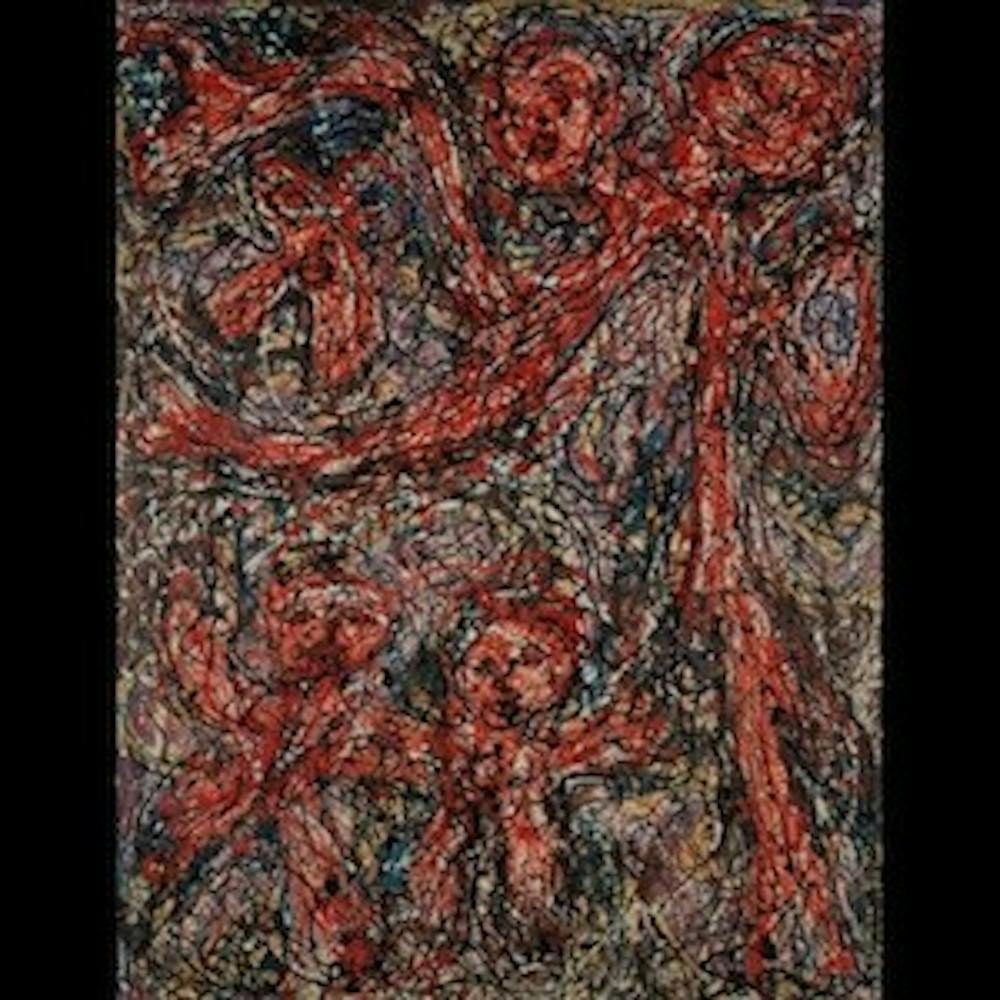If you've been to the National Gallery, chances are you've seen Jackson Pollock's "Number 1, 1950 (Lavender Mist)," a giant piece that exemplifies his revolutionary style. Currently on loan to the Phillips Collection, this famous painting takes on a whole new meaning as part of the new abstract expressionism exhibit "Angels, Demons, and Savages: Pollock, Ossorio, Dubuffet," on display until May 12.
By curating an entire exhibit of abstract expressionist painting, the Phillips has opened the door to a whole new level of understanding this movement and its individual titans. When displayed among more traditional art, the works of these three painters are often defined more by what they aren't than what they are. They're dominated by their break from tradition.
However, by compiling an exhibit made entirely of abstract expressionist paintings, "Angels, Demons, and Savages" unlocks some of the nuance of this movement and reveals a lot about the paintings and the artists.
From Pollock's chaotic, very physical method of painting, to Jean Dubuffet's simplistic "art brut" inspired by the art of children and prison inmates, the exhibit reveals works that are less about rebellion of form and more about finding new ways to convey complex emotions in painting. The exhibit also shows the different phases of the artists, allowing the reader to see how and why Pollock, for example, moved in and out of representational forms.
Dubuffet's work, while related to Pollock's, takes a much different approach. Its highly textured surfaces and rich, earthy colors are reminiscent of cave paintings, setting the stage for his unsettling depictions that look like drawings from the mind of a disturbed child. Works like "Metaphysical Landscape" start with a very simple drawing that is then surrounded and exaggerated by textural landscapes that incorporate gravel, sand and a variety of other atypical materials.
Although he is the least famous of the three artists features, Alfonso Ossorio is the centerpiece of the exhibit, serving as a link between the American Pollock and the French Dubuffet. Ossorio's work is influenced by the other two, but also takes on it's own identity at times.
True to his reputation as a link between people, Ossorio's work often explores relationship dynamics, using abstraction as a way to convey the complex emotions implicit in these relationships.
Ossorio's depictions of couples or families are rooted in realist depictions of faces but are dominated by experimental color abstractions that physically and emotionally fill the space between the people depicted, in the same way that Ossorio himself filled the space between European and American abstract expressionism.
"Angels, Demons, and Savages" is a must-see for fans of abstract expressionism but might be even more valuable to those who have trouble appreciating or liking this style, as it places the style in its own context, revealing much more about these works than is typically seen.
The exhibit will run through May 12. Admission to the Phillips Collection is $10 for students, $12 for adults.
smeehan@theeagleonline.com





